Don't Call Christina Later, Call Christina Now
Follow us
What Safety Protocols Should Be Followed When Riding an ATV?
Top Safety Practices Every ATV Rider Should Follow
All-Terrain Vehicles (ATVs) are thrilling to ride and offer a great way to explore off-road trails, but they also come with significant risks. ATV accidents can lead to serious injuries or even fatalities, especially when safety protocols are not followed. To help ensure a safe and enjoyable experience, it's essential to follow specific safety measures when operating an ATV. In this blog, we’ll cover the key safety protocols every ATV rider should follow to minimize risks and enhance their riding experience.

Top Safety Practices Every ATV Rider Should Follow
All-Terrain Vehicles (ATVs) are thrilling to ride and offer a great way to explore off-road trails, but they also come with significant risks. ATV accidents can lead to serious injuries or even fatalities, especially when safety protocols are not followed. To help ensure a safe and enjoyable experience, it's essential to follow specific safety measures when operating an ATV. In this blog, we’ll cover the key safety protocols every ATV rider should follow to minimize risks and enhance their riding experience.

1. Wear Protective Gear
Helmet:
The most crucial piece of safety equipment when riding an ATV is a properly fitted helmet. Helmets can significantly reduce the risk of head injuries in the event of a crash or rollover. Look for helmets that meet the safety standards set by the Department of Transportation (DOT) or the Snell Memorial Foundation.
Eye Protection:
Dust, debris, and branches can quickly become hazards when riding an ATV. Wearing goggles or a face shield will protect your eyes and improve visibility while you ride. Make sure they’re comfortable and do not obstruct your view.
Gloves and Riding Boots:
Riding gloves provide better control of the handlebars and protect your hands from abrasions in case of a fall. Sturdy boots will help prevent foot and ankle injuries and provide additional support when riding over rough terrain.
Proper Clothing:
Wear long pants, a long-sleeved shirt, and sturdy clothing made of durable materials like leather or thick textiles. These will help prevent scrapes and cuts in case of a fall and protect your skin from the elements.
2. Know the ATV’s Limitations and Your Own
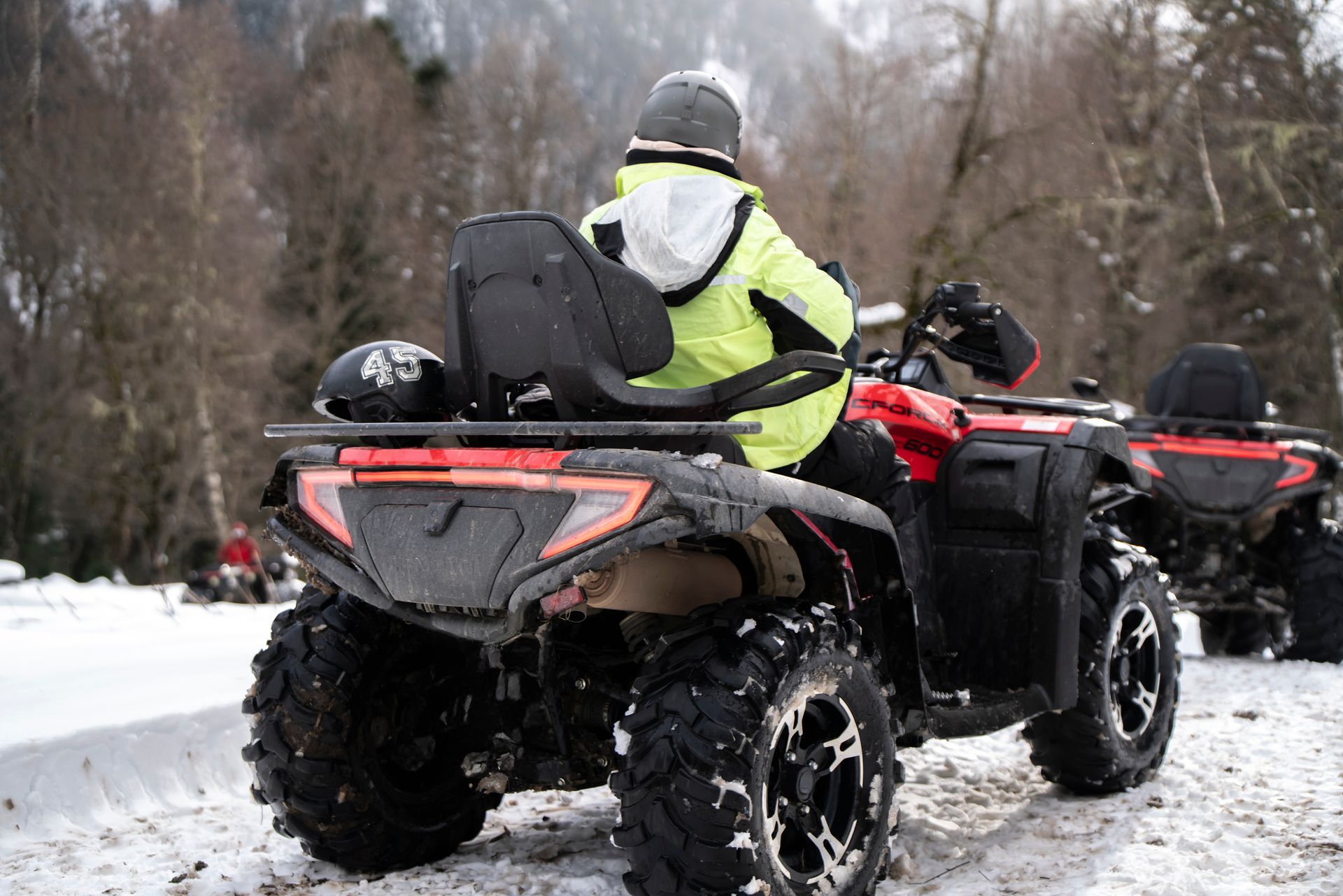
Understand Your ATV:
Every ATV is different, and it’s essential to know the specific limitations of your vehicle. Before you ride, read the owner’s manual and familiarize yourself with the recommended operating procedures, including weight limits and terrain types. Not all ATVs are designed for all types of terrain, so make sure you're using the right ATV for the job.
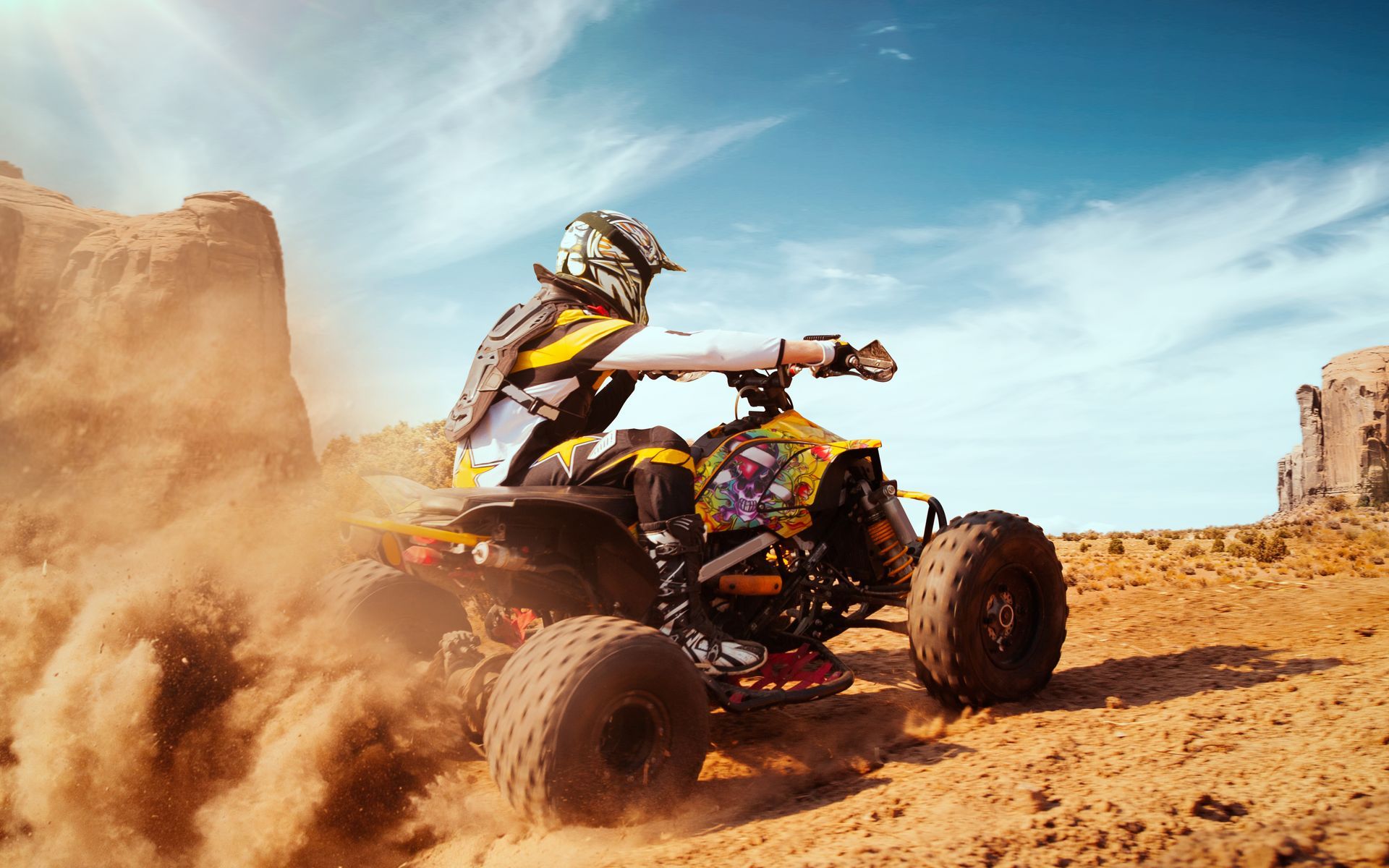
Know Your Skill Level:
ATVs can be powerful machines, and their performance can be tricky to handle for beginners. Know your riding abilities and never attempt maneuvers or terrains beyond your skill level. If you’re a beginner, take an ATV safety course to build your confidence and skills before hitting more challenging trails.

Understand Your ATV:
Every ATV is different, and it’s essential to know the specific limitations of your vehicle. Before you ride, read the owner’s manual and familiarize yourself with the recommended operating procedures, including weight limits and terrain types. Not all ATVs are designed for all types of terrain, so make sure you're using the right ATV for the job.

Know Your Skill Level:
ATVs can be powerful machines, and their performance can be tricky to handle for beginners. Know your riding abilities and never attempt maneuvers or terrains beyond your skill level. If you’re a beginner, take an ATV safety course to build your confidence and skills before hitting more challenging trails.
3. Check the ATV Before Every Ride
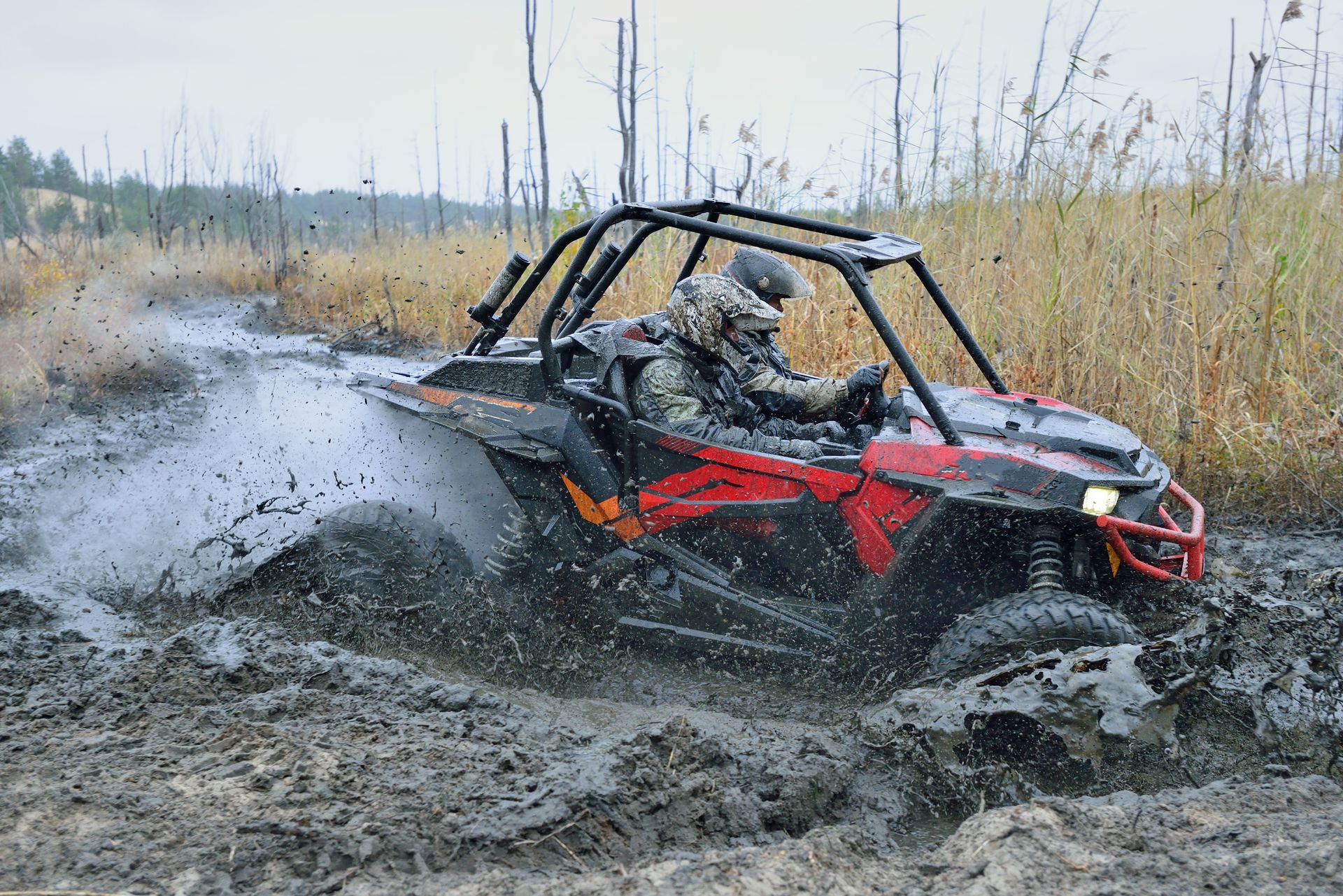
Perform a Pre-Ride Inspection:
Before riding, always inspect your ATV to ensure it's in proper working condition. Check the tire pressure, brakes, and oil levels, and make sure the handlebars, throttle, and brake levers are functioning correctly. Always ensure that your ATV is well-maintained to avoid mechanical failures while on the trail.
Proper Tire Pressure:
Check that your tires are inflated to the recommended levels. Over- or under-inflated tires can affect handling and increase the risk of accidents.
Perform a Pre-Ride Inspection:
Before riding, always inspect your ATV to ensure it's in proper working condition. Check the tire pressure, brakes, and oil levels, and make sure the handlebars, throttle, and brake levers are functioning correctly. Always ensure that your ATV is well-maintained to avoid mechanical failures while on the trail.
Proper Tire Pressure:
Check that your tires are inflated to the recommended levels. Over- or under-inflated tires can affect handling and increase the risk of accidents.

Perform a Pre-Ride Inspection:
Before riding, always inspect your ATV to ensure it's in proper working condition. Check the tire pressure, brakes, and oil levels, and make sure the handlebars, throttle, and brake levers are functioning correctly. Always ensure that your ATV is well-maintained to avoid mechanical failures while on the trail.
Proper Tire Pressure:
Check that your tires are inflated to the recommended levels. Over- or under-inflated tires can affect handling and increase the risk of accidents.

4. Follow the Rules and Ride Responsibly
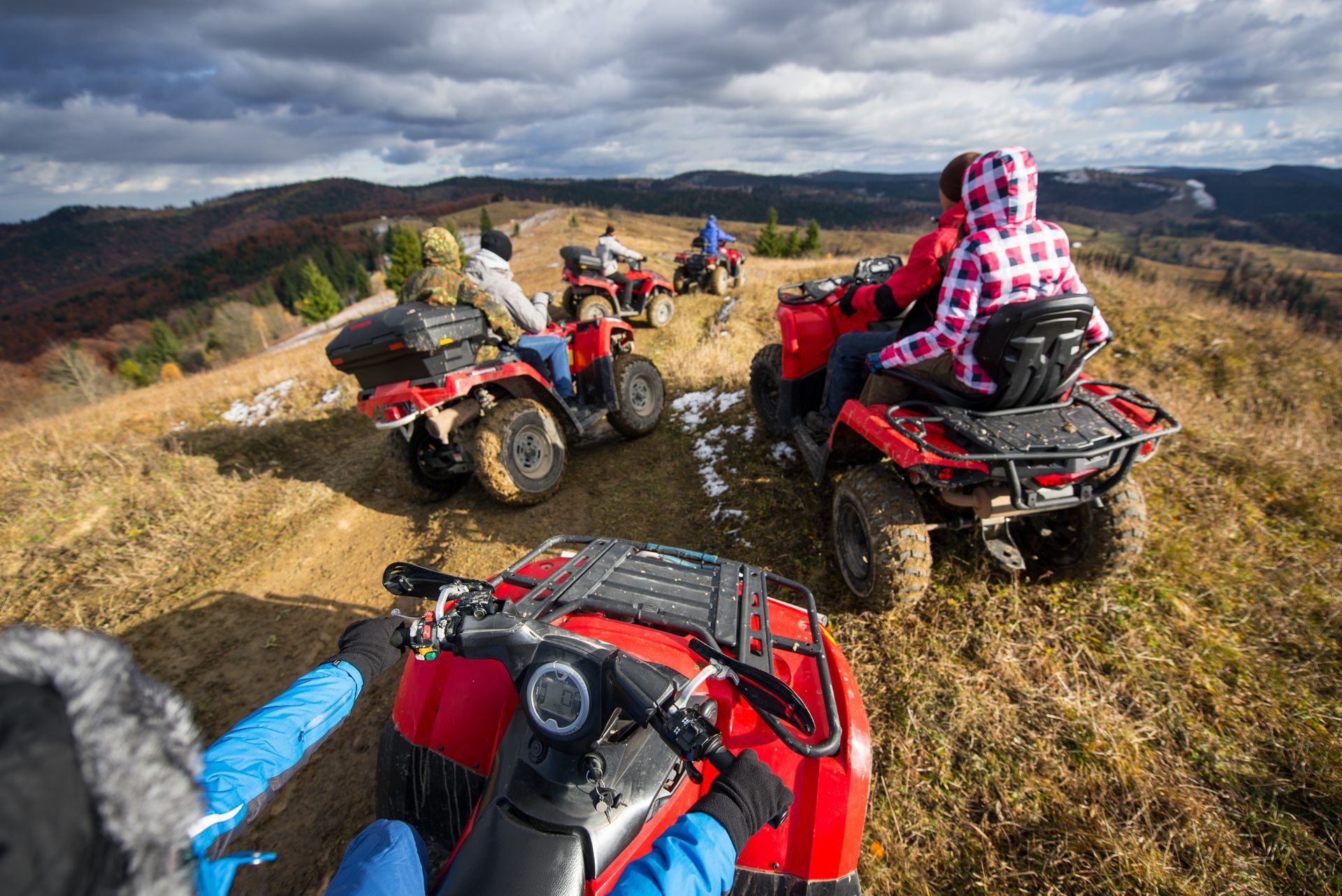
Stay on Designated Trails:
ATVs are designed to handle off-road conditions, but you should always ride on designated trails or areas where ATV riding is allowed. Riding on public roads or areas not intended for ATV use can be dangerous and may be illegal in some places. Respect posted signs and boundaries to help protect the environment and others.
Obey Local Laws and Regulations:
Before riding, check local laws and regulations regarding ATV use. Some areas require you to have special permits, age restrictions, or safety certifications. Familiarizing yourself with the rules ensures you're legally compliant and riding safely.
Ride with a Buddy:
Whenever possible, ride with a friend or family member. Having a riding partner ensures that help is available in case of an emergency. Riding alone can be risky, especially if you're in a remote area.

Stay on Designated Trails:
ATVs are designed to handle off-road conditions, but you should always ride on designated trails or areas where ATV riding is allowed. Riding on public roads or areas not intended for ATV use can be dangerous and may be illegal in some places. Respect posted signs and boundaries to help protect the environment and others.
Obey Local Laws and Regulations:
Before riding, check local laws and regulations regarding ATV use. Some areas require you to have special permits, age restrictions, or safety certifications. Familiarizing yourself with the rules ensures you're legally compliant and riding safely.
Ride with a Buddy:
Whenever possible, ride with a friend or family member. Having a riding partner ensures that help is available in case of an emergency. Riding alone can be risky, especially if you're in a remote area.
5. Avoid Alcohol and Drugs
Never Ride Under the Influence:
Just like with any motor vehicle, riding an ATV under the influence of alcohol or drugs is incredibly dangerous. Alcohol impairs your judgment, coordination, and reaction time, increasing the likelihood of accidents. Always wait until you're sober before operating an ATV.
Never Ride Under the Influence:
Just like with any motor vehicle, riding an ATV under the influence of alcohol or drugs is incredibly dangerous. Alcohol impairs your judgment, coordination, and reaction time, increasing the likelihood of accidents. Always wait until you're sober before operating an ATV.
6. Control Your Speed and Avoid Reckless Riding
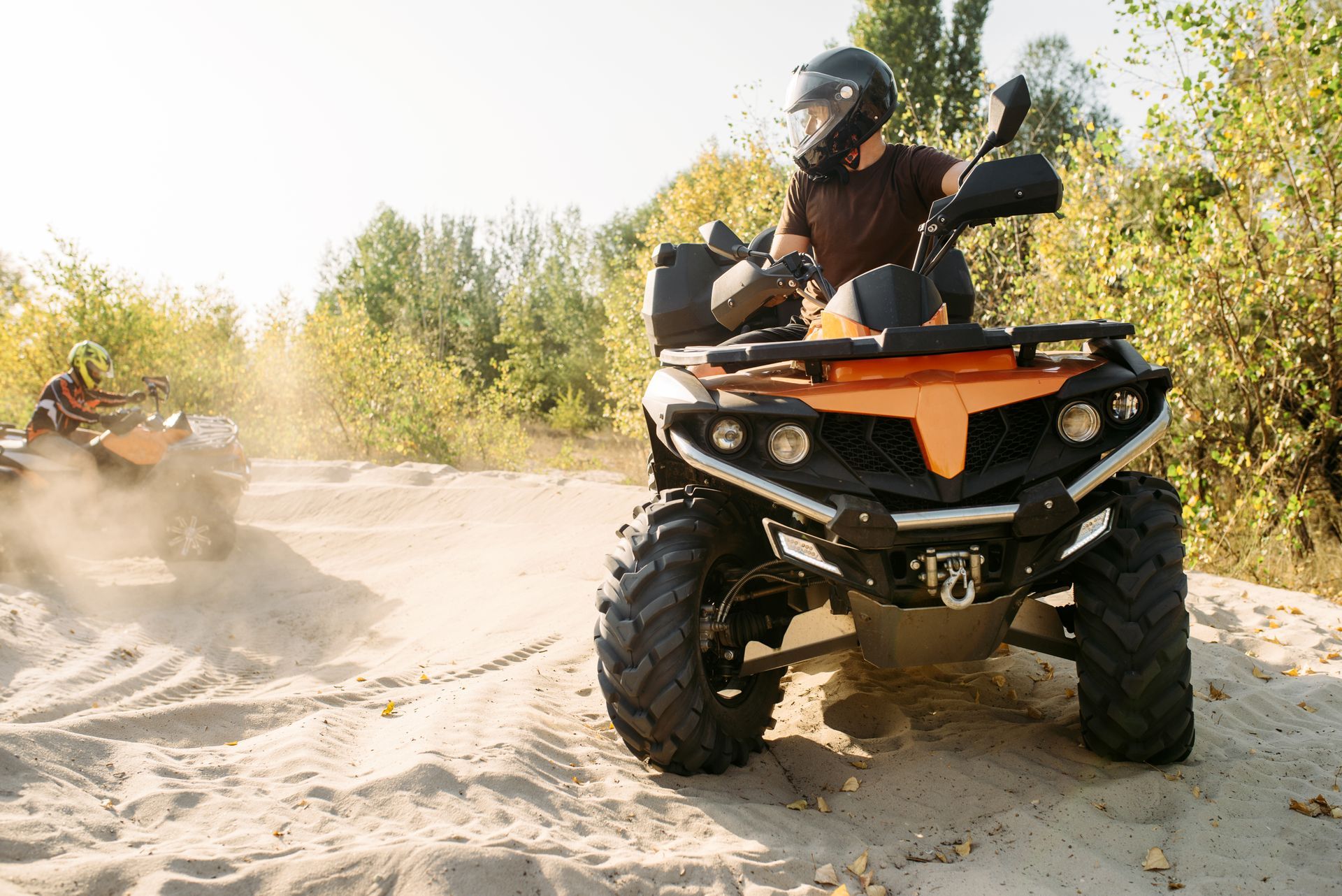
Ride at a Safe Speed:
ATVs are capable of reaching high speeds, but riding too fast can quickly lead to loss of control and accidents. Always ride at a speed appropriate for the terrain and your skill level. If you're unsure, slow down. Remember, riding too fast increases the risk of dangerous situations.
Avoid Stunts and Risky Behavior:
Many ATV riders are tempted to perform stunts or ride aggressively. However, attempting tricks like wheelies or riding in challenging conditions can be dangerous, especially if you're not experienced. Stick to controlled, responsible riding to avoid injuries.
Ride at a Safe Speed:
ATVs are capable of reaching high speeds, but riding too fast can quickly lead to loss of control and accidents. Always ride at a speed appropriate for the terrain and your skill level. If you're unsure, slow down. Remember, riding too fast increases the risk of dangerous situations.
Avoid Stunts and Risky Behavior:
Many ATV riders are tempted to perform stunts or ride aggressively. However, attempting tricks like wheelies or riding in challenging conditions can be dangerous, especially if you're not experienced. Stick to controlled, responsible riding to avoid injuries.

Ride at a Safe Speed:
ATVs are capable of reaching high speeds, but riding too fast can quickly lead to loss of control and accidents. Always ride at a speed appropriate for the terrain and your skill level. If you're unsure, slow down. Remember, riding too fast increases the risk of dangerous situations.
Avoid Stunts and Risky Behavior:
Many ATV riders are tempted to perform stunts or ride aggressively. However, attempting tricks like wheelies or riding in challenging conditions can be dangerous, especially if you're not experienced. Stick to controlled, responsible riding to avoid injuries.

7. Stay Aware of the Environment
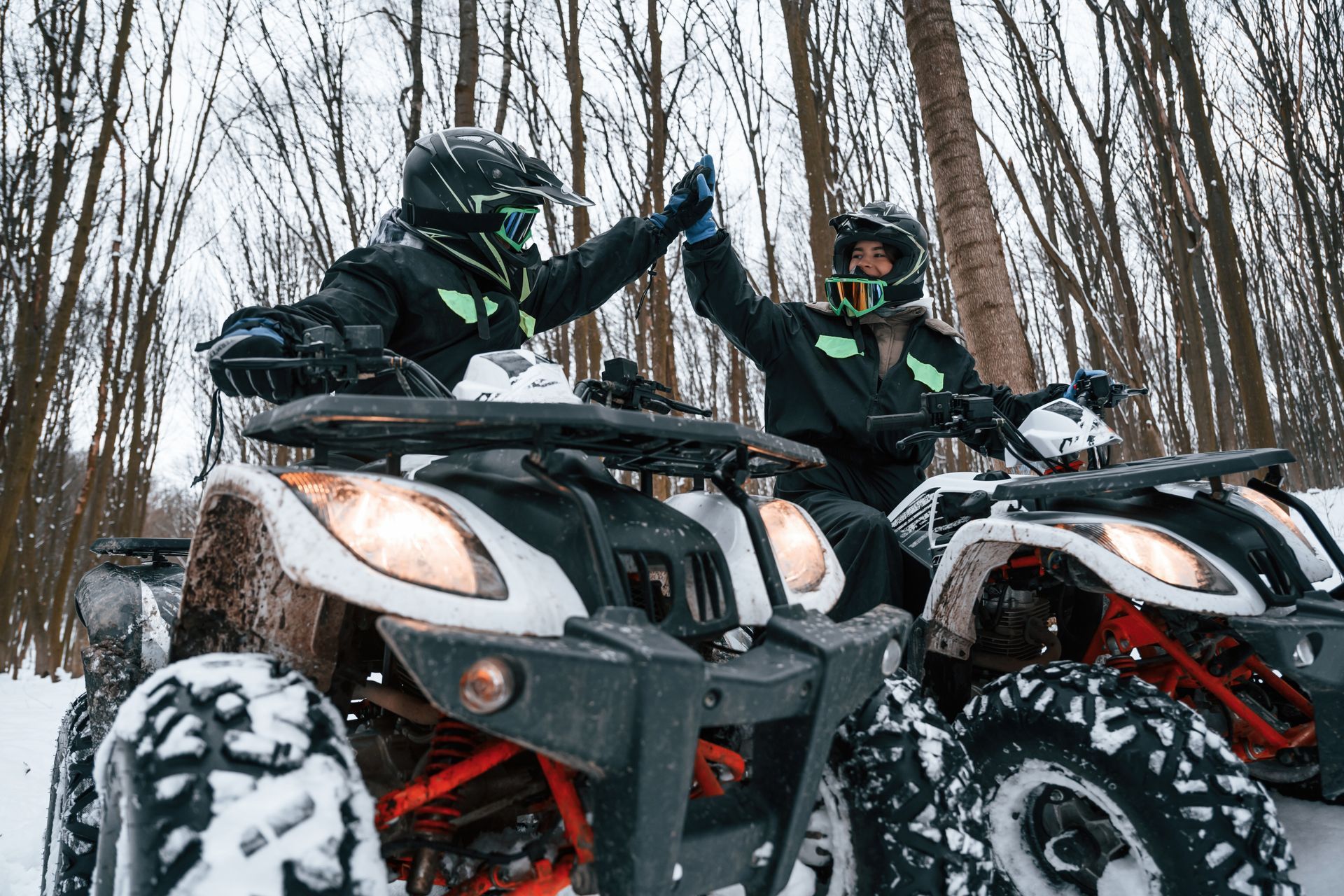
Watch for Obstacles and Hazards:
When riding, keep a lookout for natural obstacles such as rocks, tree stumps, or uneven terrain that could cause you to lose control. Always stay alert and anticipate what’s ahead. If you're riding at night, make sure you have proper lighting and are aware of low visibility hazards.
Be Cautious of Other Riders:
If you’re riding in a group, make sure to communicate with others and maintain a safe distance between riders. Collisions can happen if riders are too close or not paying attention to their surroundings. Always ride defensively and be aware of other riders’ actions.

Watch for Obstacles and Hazards:
When riding, keep a lookout for natural obstacles such as rocks, tree stumps, or uneven terrain that could cause you to lose control. Always stay alert and anticipate what’s ahead. If you're riding at night, make sure you have proper lighting and are aware of low visibility hazards.
Be Cautious of Other Riders:
If you’re riding in a group, make sure to communicate with others and maintain a safe distance between riders. Collisions can happen if riders are too close or not paying attention to their surroundings. Always ride defensively and be aware of other riders’ actions.
8. Take a Safety Course
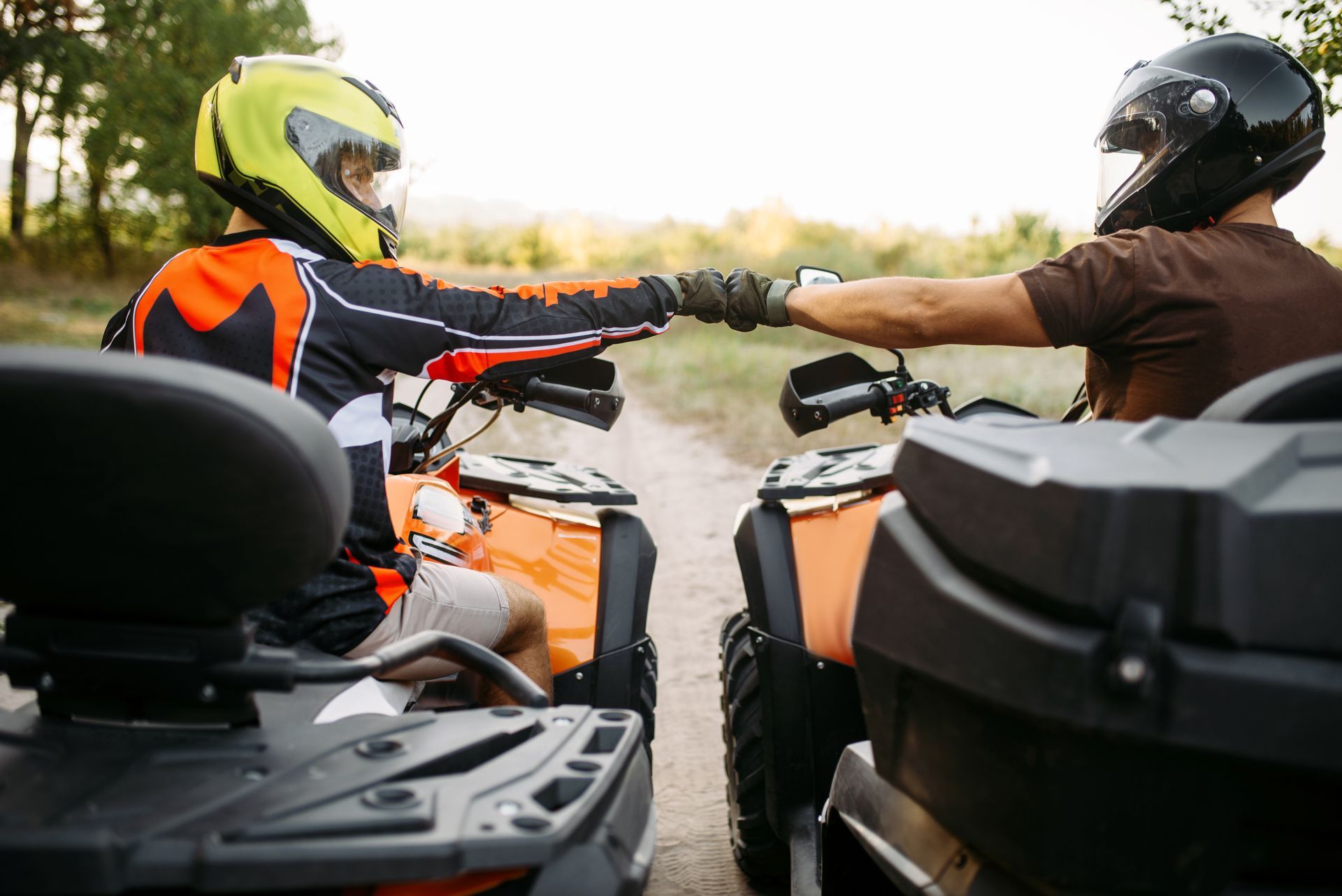
Enroll in a Safety Course:
Whether you're new to ATV riding or have experience, taking an ATV safety course is always a good idea. These courses teach riders how to operate an ATV safely, recognize potential hazards, and learn proper techniques for riding. A safety course provides valuable skills that will enhance your overall riding experience and reduce the risk of accidents.
Enroll in a Safety Course:
Whether you're new to ATV riding or have experience, taking an ATV safety course is always a good idea. These courses teach riders how to operate an ATV safely, recognize potential hazards, and learn proper techniques for riding. A safety course provides valuable skills that will enhance your overall riding experience and reduce the risk of accidents.

Riding an ATV can be an exciting and enjoyable activity, but safety should always be a top priority. By wearing the right gear, maintaining your ATV, following local laws, and riding responsibly, you can reduce the risk of accidents and enjoy a safe off-road experience. Stay informed and practice these essential safety protocols to protect yourself, your passengers, and the environment.
If you’ve been involved in an ATV accident or have any safety concerns, contact us today.
We’re here to help with advice, resources, or legal guidance on ATV-related accidents.
Quick & Reliable
We are available 24/7 to Guide You to Better Health.
CALL CHRISTINA NOW is here to help 24 hours a day, 7 days a week, offering free and compassionate support. When you call us, we'll listen to your concerns, understand the specifics of your accident, help you find medical care for your injuries, and connect you with a professional who can advise you on the legal aspects of your situation.
CALL CHRISTINA NOW specializes in assisting with Lawyer and Medical Accident matters. If you've been in a car, motorcycle, or truck accident—or any other kind of accident—contact us today for trustworthy support.
DISCLAIMER:
CALL CHISTINA NOW isn't a law firm and can't provide legal advice, but we can refer you to the right attorney who can.
All Rights Reserved | Call Christina Now
Copyright © Call Christina Now Offers All Rights Reserved 2025
View Our Privacy Policy | Terms & Conditions | Disclaimer
